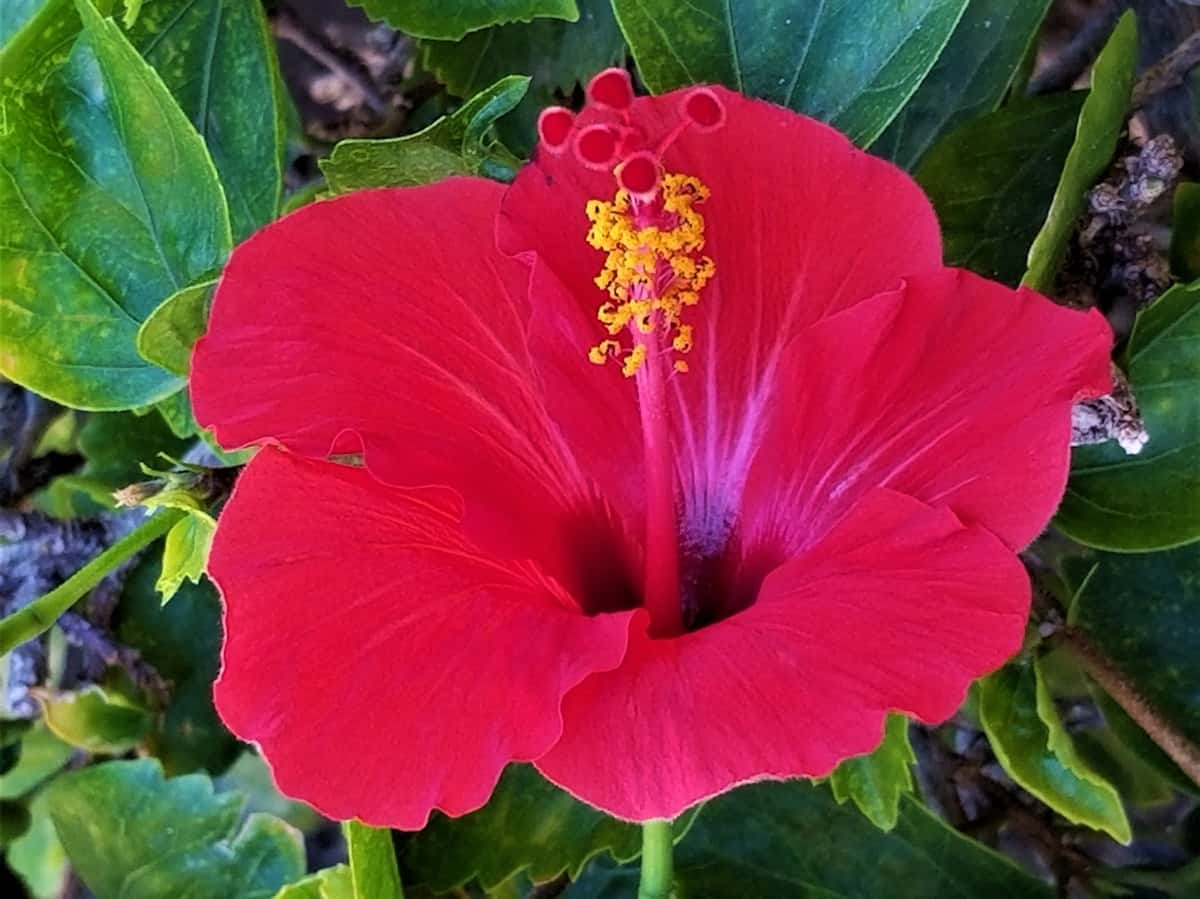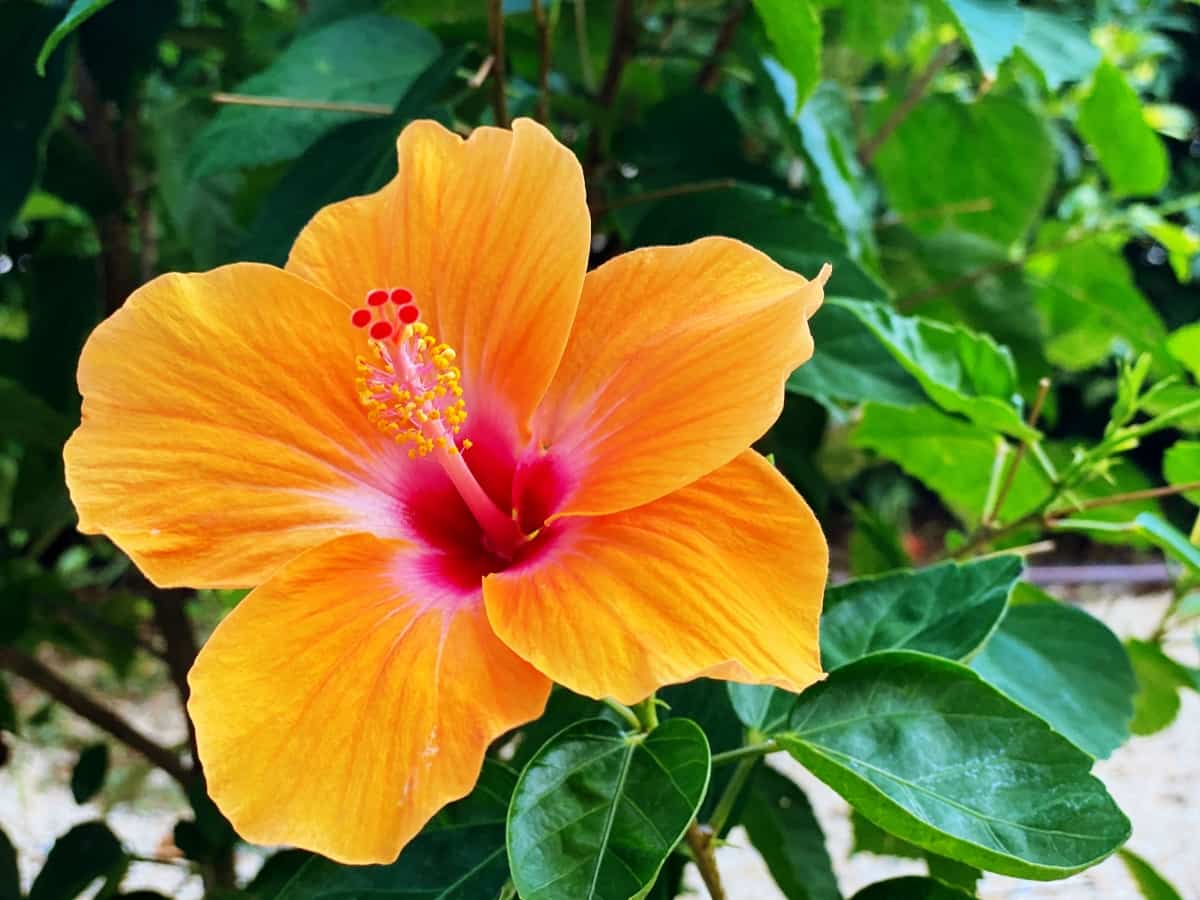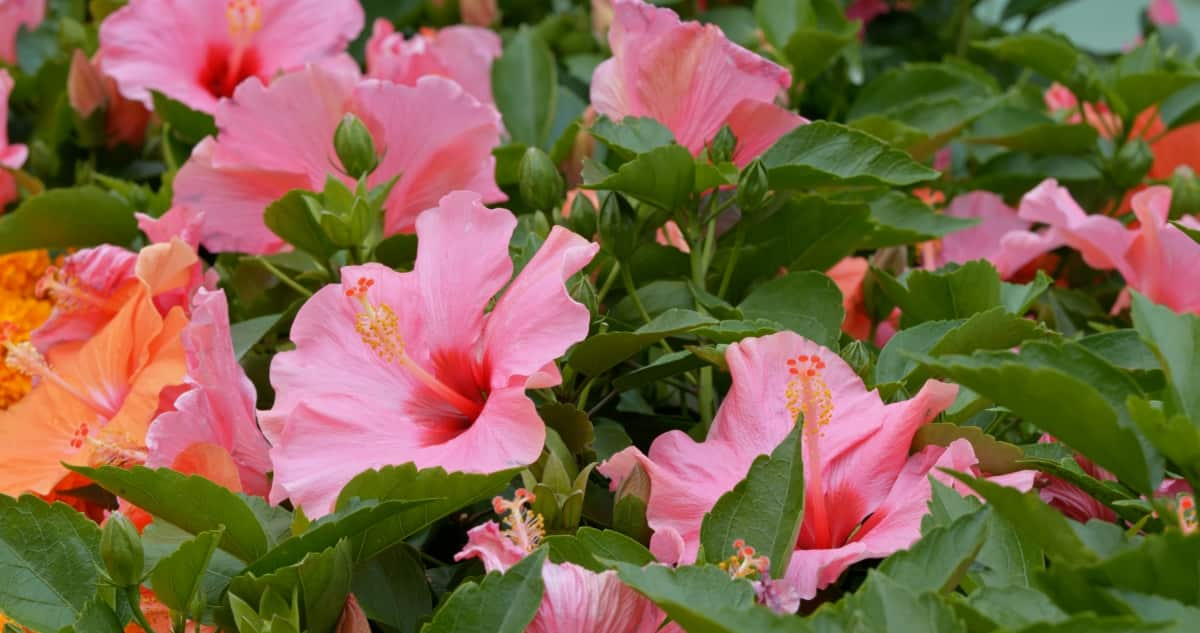A hibiscus blooms much later in the season than most other flowering plants, which often reach their peak by the end of summer. Your garden can achieve the same results with nitrogen and potassium, but you’ll need to increase them. In addition, they respond well to soil enriched with various micronutrients. In many fertilizer formulas, they can be found.

In addition, regular mulching will nourish the soil and increase the health of your hibiscus plants. Like many other species, Hibiscus can absorb nutrients through their leaves, so choosing the right hibiscus fertilizer is crucial. Therefore, foliar sprays will also work well on them.
Best Fertilizer for Hibiscus
What Does Hibiscus Need?
Lots of Potassium
Fertilizer containers often mention potassium as the third or last number in the formula for Hibiscus. A plant’s growth and metabolism are greatly aided by potassium. The plant uses potassium to produce sugars for food through photosynthesis, which uses sunlight and water. Afterward, these sugars are used to build all the plant parts, and Hibiscus, with its complex, colorful, huge flowers, needs more potassium than most plants. Additionally, potassium keeps each plant cell plump, hydrated, and healthy, making it lusher, prettier, and more disease and drought resistant.
Very Little Phosphorus
Hibiscus also has a problem with phosphorus. During high doses, phosphorus will slowly damage hibiscus plants. Using “Superbloom” or “Bloom Booster” fertilizers is a common mistake for novice hibiscus growers. The high levels of phosphorus in these products are very damaging to Hibiscus. Avoid fertilizers with high phosphorus that claim to enhance blooms. It may work for some plants, but for Hibiscus, it is a disaster waiting to happen.
Medium Amounts of Nitrogen
Nitrogen is needed by all living cells and by all plants. Almost all plant metabolic processes use nitrogen, including proteins, enzymes, chlorophyll, and chloroplasts. It is common for leaves to turn dark brown when too much nitrogen has been applied. This is known as “fertilizer burn.” However, too little nitrogen can stunt plant growth.
Providing enough nutrients to allow optimum growth without burning the plant is important. In the case of Hibiscus, this means a middle-range amount of nitrogen. Nitrogen fertilizer burn should always be avoided, no matter what fertilizer you use. The telltale brown leaf edges indicate that you need to stop using fertilizer and water with only plain water for a few weeks.
Which Type of Fertilizer is Best for Hibiscus Plants?
Hardy Hibiscus and tropical Hibiscus are two kinds of Hibiscus plants. Despite their different climates, both types of Hibiscus require similar fertilizers. The slow-release granules and liquid fertilizers can be used on hibiscus plants. Hibiscus plants require a high level of nitrogen, a low level of phosphorus, and a high level of potassium to grow at their best. NPK ratios of 6-4-12 or 6-6-8 should be used when fertilizing.
When to Fertilize Hibiscus
During spring, Hibiscus typically begins to form buds when temperatures rise consistently. Depending on your region and climate, spring will arrive at different times. This method lets you easily determine when to start feeding your plants. No matter what type of feed you choose (quick-release or slow-release), they are ready for it once the first round of blooms fades. During the summer, continue feeding to promote healthy foliage growth, and then in the fall, complete the process. During their winter dormancy period, Hibiscus won’t need to be fed.
In case you missed it: How to Grow Hibiscus in a Greenhouse: A Step-By-Step Guide from Planting Stem Cuttings to Harvest

How Often to Fertilize Hibiscus
Depending on where they grow, your hibiscus plants and shrubs will need fertilizer. Since excess water drains, potted plants require more frequent watering and feeding due to nutrient depletion. You should fertilize your plants roughly once a week during their active, blooming period if you use a water-soluble fertilizer.
The soil in garden beds holds more water and nutrients, so plants can easily go two weeks without fertilizer. Using a slow-release option, you only need to apply it three times per year. After the first round of blooms in late spring, again in mid-summer to boost foliage growth, and then once more in autumn, before winter sets in.
How to fertilize Hibiscus
You can easily and effectively achieve healthy, bountiful blooms throughout the summer with either quick-acting, water-soluble feeds or slow-release, granular feeds. With the variety of N-P-K ratios available, you can meet both your plants’ and the rest of your garden’s needs.
- The soil around your Hibiscus should be lightly watered if you are using liquid fertilizer. The recommended dose should be diluted according to the instructions on the fertilizer packet.
- The liquid fertilizer should be applied every two weeks to the soil, not to the leaves or flowers.
- You should mix slow-release granules into the soil four times yearly if you use them.
- Activate the granules by thoroughly watering the soil.
Fertilizing hibiscus plants when their soil is moist is recommended. Plant roots can be damaged by nitrogen in fertilizer when the soil is too dry. Since Hibiscus doesn’t like to dry out completely, you shouldn’t worry about fertilizing dry soil if you have a good watering regime. If your Hibiscus is not actively growing or blooming during the winter, then reduce the amount of fertilizer you give it. The less active Hibiscus are, the less food they require. You won’t need to fertilize during the coldest two months of winter.
Is There an Effect of Not Fertilizing Hibiscus?
Your Hibiscus will eventually die if you don’t fertilize it. The health and vitality of the plant depends on fertilization. Hibiscus cannot grow large or produce blooms without proper nutrition. You should provide your Hibiscus with a balanced diet that includes nitrogen, phosphorus, and potassium. Depending on your Hibiscus needs, these three nutrients can be found in different ratios in fertilizer formulations. You should choose a formulation that meets the specific needs of your plants and the environment in which they grow.
In case you missed it: How to Grow Hibiscus from Cuttings: DYI in 10 Simple Steps

Conclusion
Your Hibiscus plant needs fertilizer to receive the nutrients it needs to thrive. Choosing the right fertilizer will help your flowers grow to their full potential. Following this guide’s suggestions, you can grow vibrant and well-nourished Hibiscus flowers that will catch the world’s attention. When applying your fertilizer, make sure you follow the instructions on the label.
- Feed Your Flock for Less: Top 10 Tips to Save on Chicken Feed
- Ultimate Guide to Ossabaw Island Hog: Breeding, Raising, Diet, and Care
- Hatching Answers: The Top 10 Reasons Your Chickens Aren’t Laying Eggs
- Eggs and Economics: Breaking Down the Cost of Raising Backyard Chickens
- Defend Your Greens: Proven Methods to Keep Iguanas Out of Your Garden
- Ultimate Guide to Cinnamon Queen Chicken: A Comprehensive Guide for Beginners
- Ultimate Guide to California Tan Chicken: Breeding, Raising, Diet, Egg-Production and Care
- Ultimate Guide to Marsh Daisy Chicken: Breeding, Raising, Diet, and Care
- 10 Types of Chicken Farming Businesses You Can Start for Profits